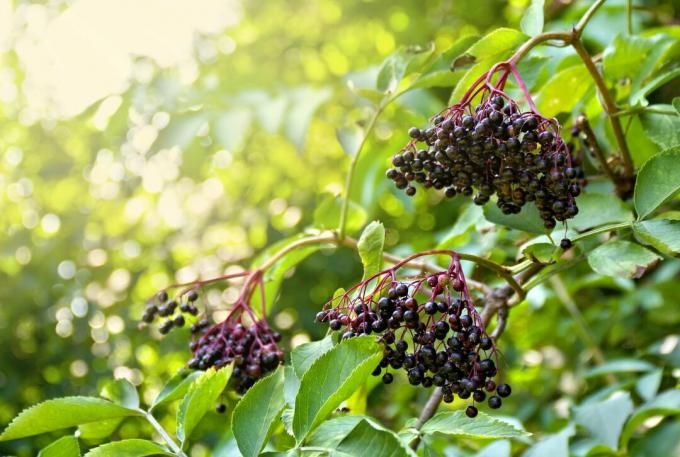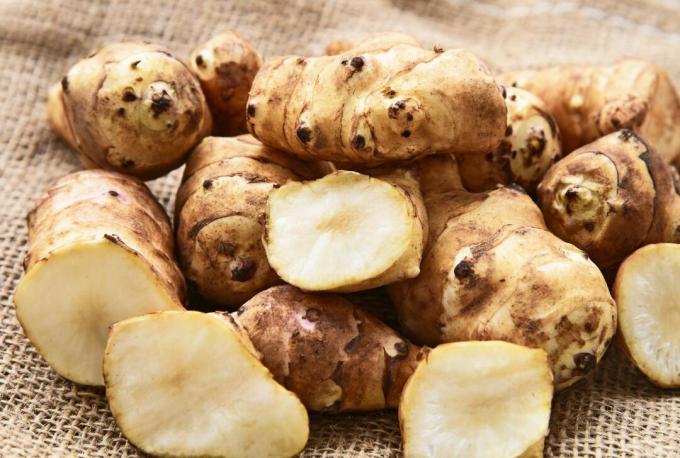As cute as they look, voles are real pests in the garden. Find out here which plants help against voles and how to drive them away.

Even if the small rodents may remind one or the other of the cute hamsters and mice from the pet trade, voles are (Arvicolinae) anything but welcome in our gardens. Because the little ones are always hungry and like to nibble on the roots of some plants, which then become sick or even wither. Thus, voles can quickly cause considerable damage to our plant favorites.
contents
-
Plants against voles
- Chase voles away with smells
- Black elder (Sambucus nigra)
- Garlic (Allium sativum)
- Imperial crown (Fritillaria imperialis)
- Lure voles away with Jerusalem artichoke
- Protect roots from voles
Plants against voles
Fortunately, there are some plants that can help drive voles away. We reveal which plants these are and what else you can do against voles in the garden.
Chase voles away with smells
Since there is usually not much to see underground, the rodents use the smell to orient themselves for the most part and can therefore be confused by odor-intensive plants. However, the fight against voles cannot be done by such plants alone, because the The following plants are not eaten by the mice, but do not have a permanent defense Effect. However, these plants can be grown in the garden in order to spoil the appetite of the mice.
Cruciform milkweed (Euphorbia lathyris)
This biennial plant, which often spreads by itself in our gardens, belongs to the milkweed family. Many of us may already be familiar with these plants by the name of “mouse trees” or “witch's milk”. They can grow up to a meter tall and produce typical fruits that consist of three chambers and from which a milky liquid emerges when torn off. The milkweed contains ingenol and ingeol ester and is toxic because of these ingredients.

There is a method of throwing the fruit of the milkweed into the vole outlets. Whether this approach scares the voles, however, is controversial, but you are spreading on them Waste the milkweed in the garden and thus create more unsavory plants for there Voles.
The effect against voles is partially confirmed, in any case it is noticeable that voles and also moles stay away from these plants. So if a milkweed gets lost in your garden, you shouldn't remove it while weeding, but rather enjoy their interesting appearance and the effect against voles to use.
Black elder (Sambucus nigra)
Black elder or elder, as it is also called in Austria and Bavaria, is a delicacy for us, but exactly the opposite for voles. If you like fruit and berries in your garden, but have frequent problems with voles, then your best bet is the elder. The voles shy away from it and usually do not eat its roots. So enjoy the tasty fruits and flowers of the elderberry bush and the fact that it will certainly not fall victim to the voles.

garlic (Allium sativum)
If you take a seat next to someone on the train or on the bus who has been enjoying one beforehand Having eaten garlic soup, we too like to take our legs in hand and look for a new one Place far away. It is the same with voles and garlic plants. So sit down garlic in your garden, preferably near particularly endangered vegetable plants to protect them. How strong the action against voles really is is described in different ways, but garlic is actually avoided by these rodents.
Imperial Crown (Fritillaria imperialis)
The imperial crown is particularly nice to look at in our beds and also scares off voles. First and foremost, the imperial crown is extremely poisonous - for humans and animals alike - and it also gives off an unpleasant odor that keeps many pests away. Unfortunately, individual plants have only a limited deterrent effect on voles. It is therefore advisable not to put the imperial crowns in one place, but rather to distribute them individually or in groups in the garden.
Lure voles away with Jerusalem artichoke
You can of course also use another method for a vole infestation, namely the animals to steer specifically towards certain cultures, which one sacrifices, so to speak, to the rest of the cultures save. So you lure the voles into another area of the garden and hopefully have some peace in the vegetable patch. Such an attractive effect is said to be Jerusalem artichoke (Helianthus tuberosus) after, but also Tulip bulbs (Tulipa), Carrots (Daucus carota subsp. sativus) and celery (Apium) are one of the voles' favorite foods. So you can plant a strip of Jerusalem artichoke on the edge of the garden, for example. The voles will eat the tubers, but the rest of the garden is protected in this way.

Protect roots from voles
One often reads about the fact that digging thuja or elder branches has an effect against voles and thus protects the roots of different plants from being eaten. However, this effect has not necessarily been proven. Walnut leaves are also said to protect roots from being eaten away. A short-term effect can be explained by the strong smell of these parts of the plant, but that is Burying these branches or leaves when planting fruit trees, for example, is not a long-term solution. The use of wire baskets has a much better effect here. Some gardeners swear by digging in such strong-smelling branches and leaves, and that is how you do it does no harm, you should just try this method and experience it yourself collect. Since these annoying mice don't necessarily want to run into us either, they are supposedly also deterred by the smell of human hair that is scattered in their corridors. If you are about to trim your bangs into shape, it is best to catch the hair and sprinkle it into the vole outlets.
More tips on how to be successful Control of voles we have compiled for you here.



